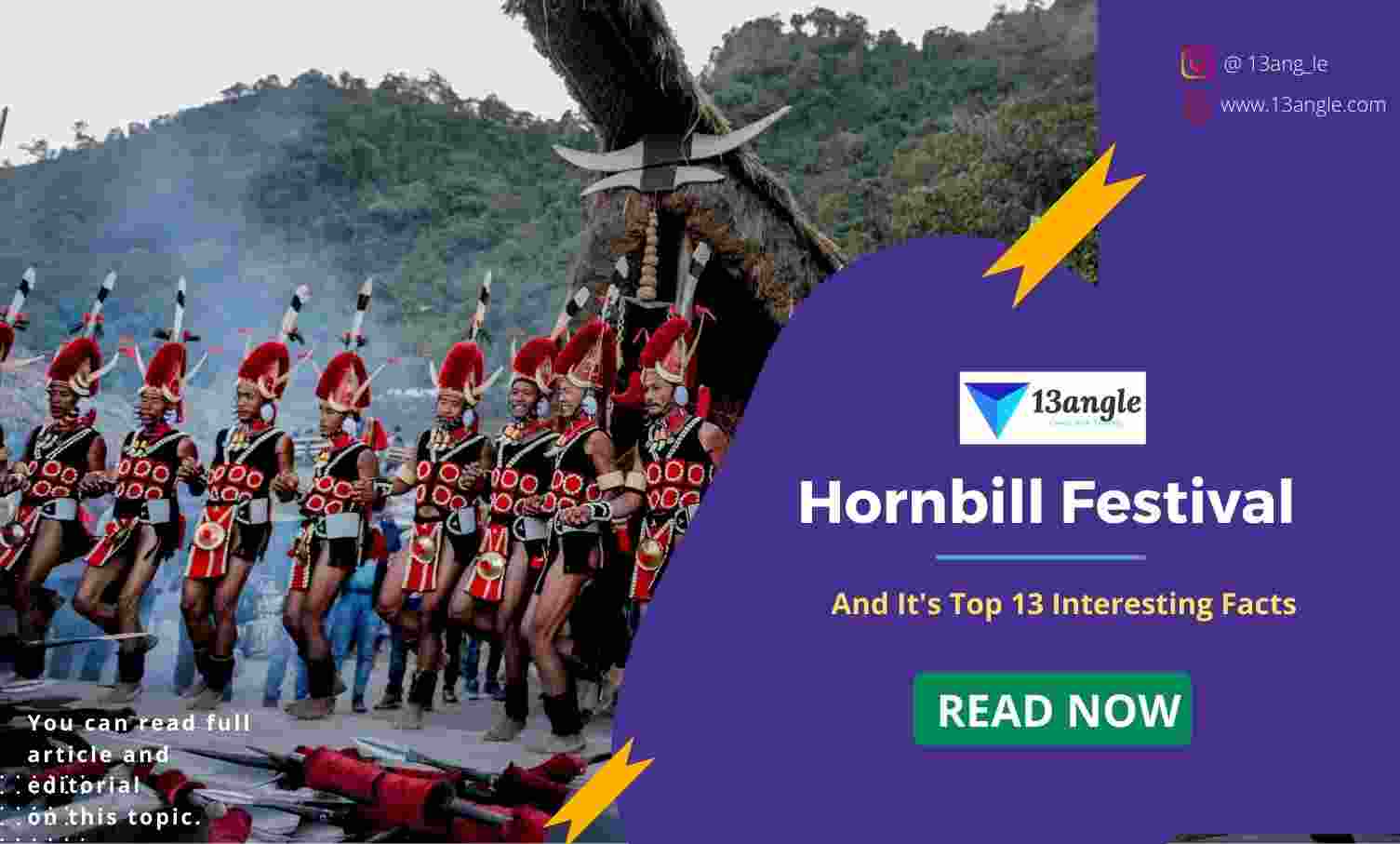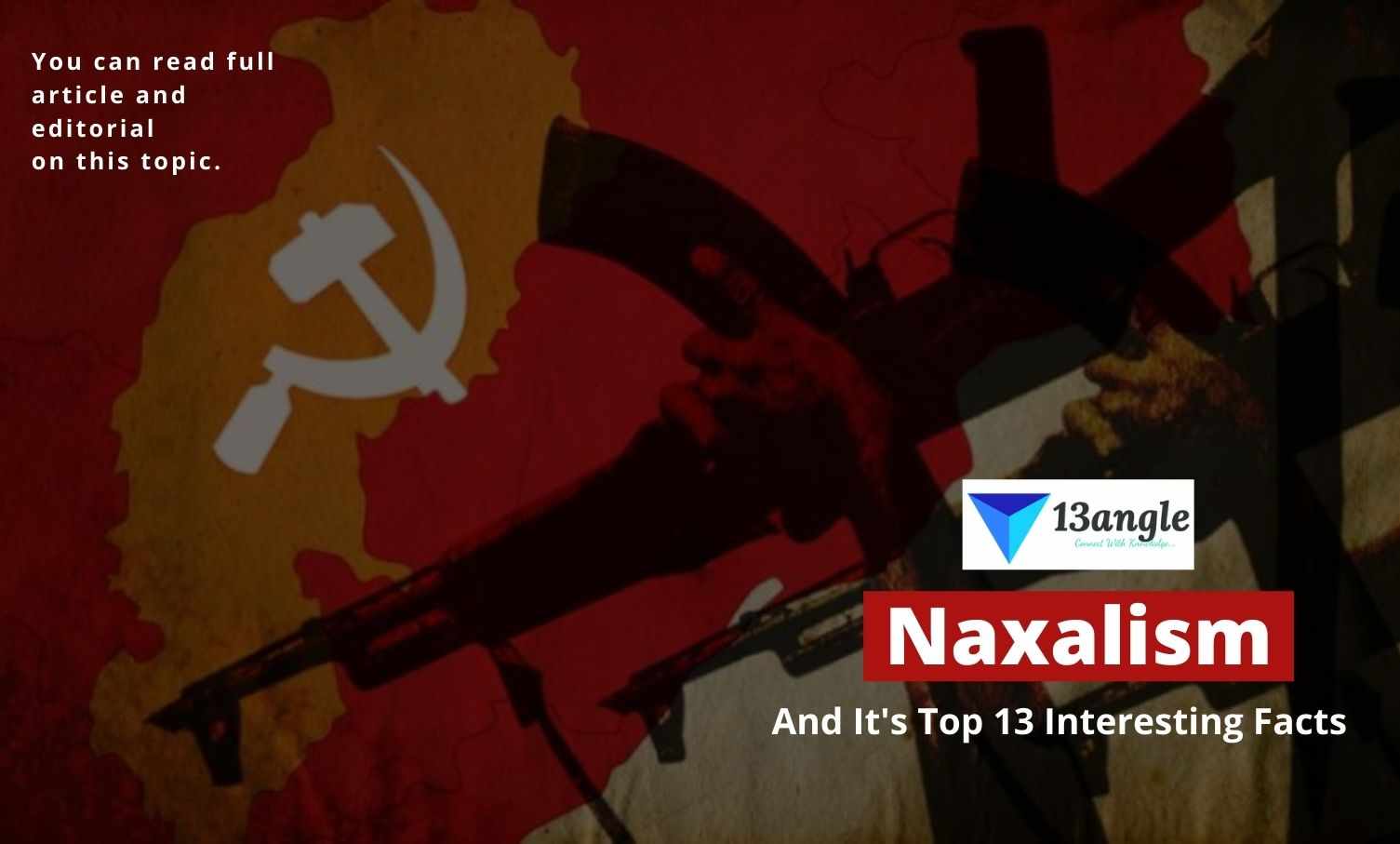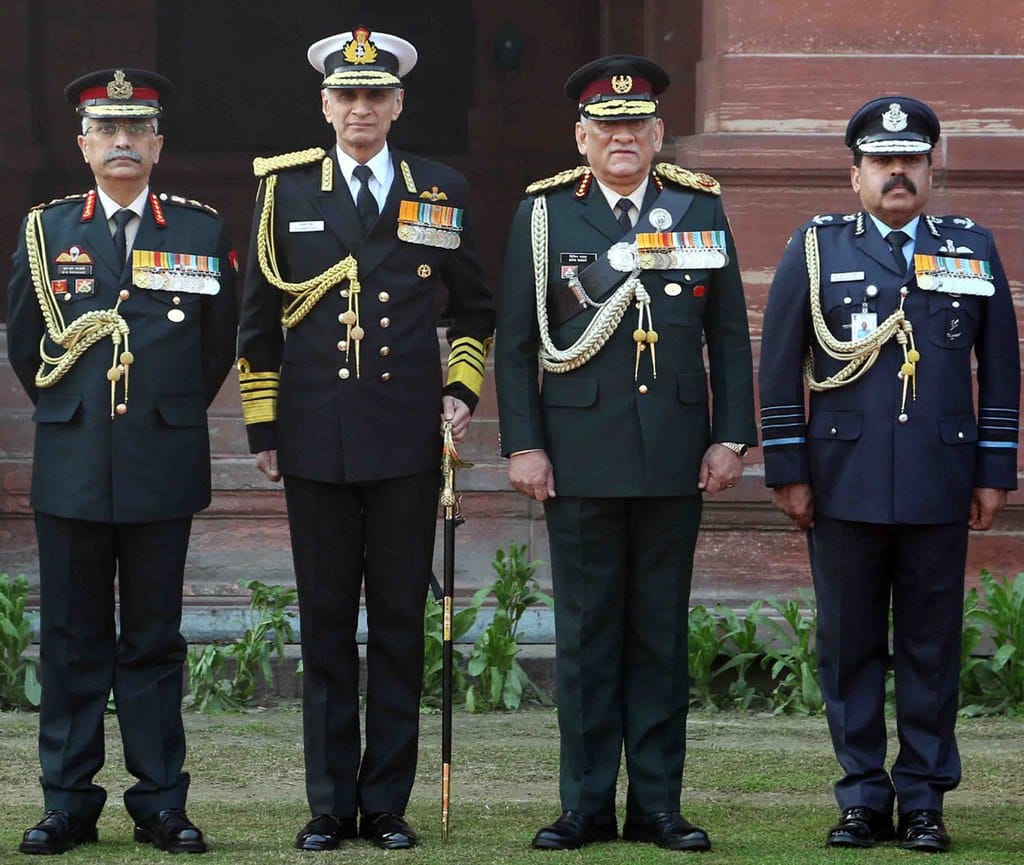
Introduction
Before putting your step towards the depth of understanding the “urgency of Defence reform of India” it is important to get the basic concept that what exactly is “Defence Reference”.
It firstly lies under the category of SSR means (Security Sector Reform) who is basically responsible for maintaining & bringing improvement in the democratic control in the Country. This sector also keeps an eye on the work process of the military, the Defence sector to make sure things are going smoothly. Also, that whatever the work is taking place should be proven effective, In favour of their cause and of course affordable.
Moving on, as for Defence reform if they are taking some step or doing something they are always supposed to consider government, the Army& the People like for instance they need to look out in making such culture changes that will help in improving the relationship between security forces & also help in protecting countries population. They also need to be responsive towards govt. policy & everything. Whatever policies are made by Govt. in terms of Defence SSR & defence reform sector mainly ensures that they’re in the favour & acc. To the will of the people of this country.
As the time & needs are changing according to the situation our country is surrounded, the Defence reforms have also been reformed according to especially in the last few years if we take a look in it carefully in comparison to the time period of Post-Independence in India. A commitment has been made by the govt. towards the betterment of deadline & organizing as well as operating Defence forces in India.
The urgency of Defence reform is kind of necessary because of constant bureau creative rivalries among nations, which leads in creating barriers when the time comes to make changes in the National Security.
Another thing is that media has always portrayed Indian Military being incapable of dealing with fundamental things in Military structures & processes which according to them happened because of the lack of political will & this mindset needs to be changed. The opinion of our own people about their own military service needs to directed incorrect direction which clearly can be done by establishing & modifying changes in Defence service means Defence reform.
Importance Of Defence Reform
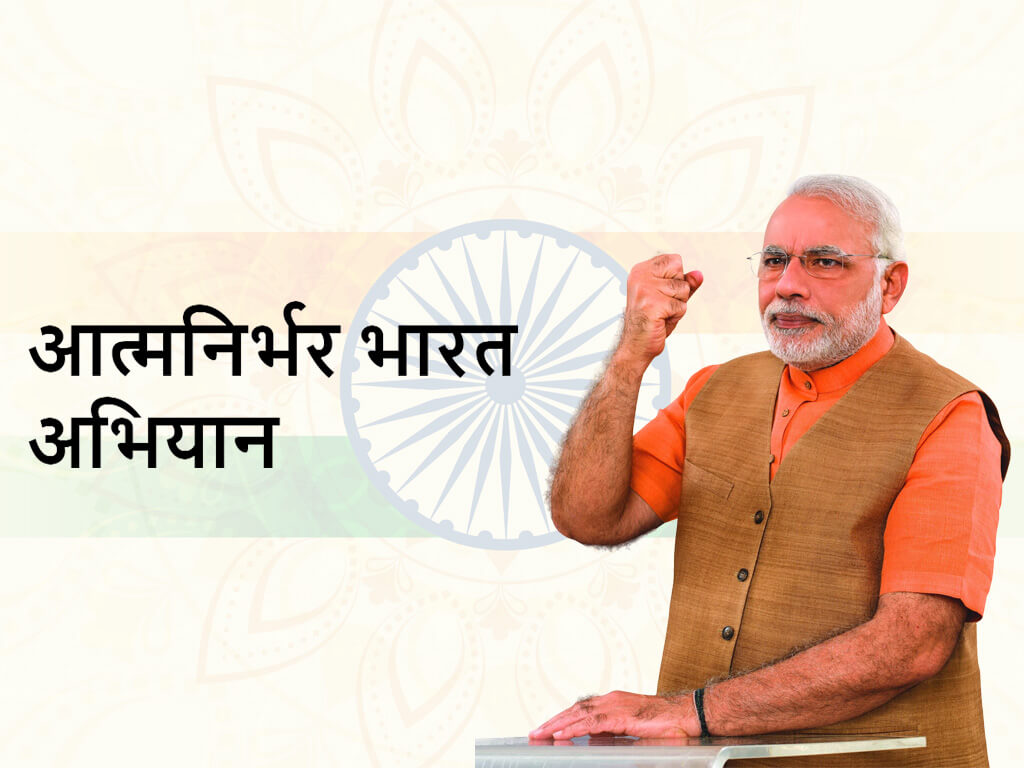
A debate has been taking place in our country for a quite long time about reforms in Armed Forces, Commissions & other underlined reports. Defence reform is mainly required to improve coordination between all 3 Forces Defence reform is said to be operated by the Chief of Defence Staff, CDS that will contribute to making our Defence more effective for better result outcomes.
This Defence reform is also beneficial for the campaign started by the Honorable Prime Minister of India Narendra Modi that is called “Aatmanirbhar Bharat”. Since this campaign has been launched an effective and positive increment can be seen in Defense Industry, which seems valuable & like a boost for Exporting Defence staff, a high level of transparency can be seen, things have been slowly but hugely being shifted towards the digital method.
Defence reform has also been playing a vivid role in the growth of infrastructure since it has been introduced by the govt. in our system. Because of Defence reform India was able to bring not just better results in a lot of different field aspects but with the help of it.
Purpose Of Defence Reform

As for the latest information, it can be said that the aim of Defence reform is to merge the capability of all 3 main Forces into one means the Army, the Navy & The Air force. It is to be said that all the categories of services provided by all 3 Forces which are a total of 17 in number will be compiled into main “5 commands” so that we can effectively deal with future conflicts smoothly. Although some disagreement can be seen among the heads of forces regarding their viewpoint towards this reform.
A lot of rapid change can be seen in the security threats for India which are obviously taking a new form in the shape of threads from China at the visible in Ladakh. All these current circumstances verdicts towards just one thing that all the old structures & ideas won’t be sufficient enough to deal with the problem.
Moving on, as the advancement in technology is increasing day by day it’s a better & convenient option to make changes &modernize our own technology sources so that we can access them in future & also they are available at low cost.
As if the investment will be put up in technology them there will be fewer chances of having a Cyberattack in the country drones can be used to look after that no tragedy will take place. If there will be an improvement in artificial intelligence then a lot of help can be achieved by the country during the time of crashes as technology have solution to most of the situation.
In all these past few years Indian military did not just act as a shield from outside threats looking on borders but also they’re playing every sort of protector role of local citizens in different circumstances like being humanitarian assistance, or a supporter in disaster relief and maintaining the caste conflicts that occurred sometimes in different cities for different reasons.
The other reason for the Defence reform urgency in India was the necessity of replacement of equipment used by the Indian Military are not suitable for the future confrontation for the problem they might encounter with. This was said by the military analyst mainly.
Opportunities In Defence Sector
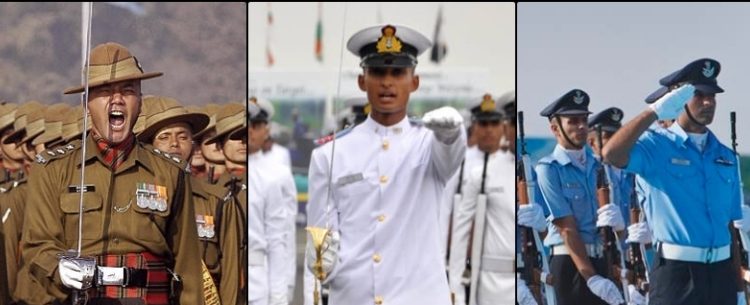
- Having your career in the field of Defence Sector is the most greatest achievement in itself. It’s a path that leads young candidates towards a duty that will give them chance to serve the country, those who want to. As the Ministry of Defence is accountable for the management of Armed forces they have opened up opportunities for civilians to get trained and become one of the Defence officers. The training is done under the established institutes that are built for this specific reasons. Every candidate can take training according to this preferred position they want to work in Speaking of positions they are as follows.
Positions
- The Commissioned officers in the Armed Forces
Criteria
=> Recruits by conducting a competitive examination
- National Defence Academy (NDA) & Naval Defence Academy (NA)
- Combined Defence Service Exam
- Short Service Commission (Tech) Entry
=> The Recruitment is done by the UPSC committee
- Except for UPSC another way to get recruited is through (Indian Military Academy, Dehradun) that is for Permanent Commission (PC)
- As for Short Service Commission (SSC), it is done through (Officers Training Academy, Chennai)
=> Positions come under this category:-
- Permanent Commission (PC)
- Short Service Commission (SSC)
- Short Service Commission (Women)
- Recruitment of Personal Below officers Rank
- Life in Army
As for the “Indian Air Force” to be a part of it UPSC is main to attempt for the recruitment of Commission Officer Post.
As for the other technical field, National Cadet Corps (NCC) or other service entries that is directly done through the recruitment directorate for IAF
=> Branches include in IAF are:-
- Flying Branch
- Ground Duty Branch
- Life in Air Force
=> As for the Indian Navy, the position that is available has the same drill as the previous one. The branches that come under it are:–
- Executive Branch
- Engineering Branch
- Electrical Branch
- Educational Branch
- Sailor Branch
Opportunity For Women In Indian Army
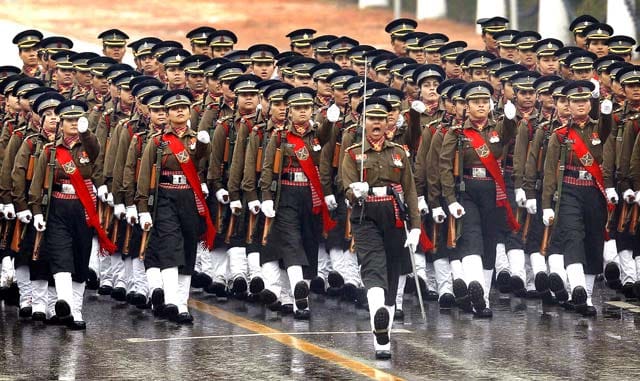
There was a time when only men were allowed to be a part of Army Forces no matter what positions field it was the entry of women’s was strictly prohibited but not anymore. The time has changed & now they are given the same & equal opportunity in Army as men’s which reflects how far we have come.
There has been an incredible increment has been made in the no. of women’s candidate in Indian Army Forces which is expected to be increased only future.
As for the current into the number of women serving for our Nation in all three forces is near 9,118 women’s which is a huge charge as well as achievement in itself.
Whereas 1700 females are recruited as jawans in troops of Military Police.
- There are 704 female officers in the Indian Navy which is around 6.5%. The Indian Air Force consists of 1,607 women officers that is 1.08% of the total. Indian Military consists of most of women officers that is 6807 among all three forces as per the information.
=> The numbers of women employed in the three armed forces are as under:-
| MEN | WOMEN | WOMEN% | |
| INDIAN ARMY | 1218036 | 6807 | 0.56% |
| INDIAN AIR FORCE | 146727 | 1607 | 1.08% |
| INDIAN NAVY | 10108 | 704 | 6.5% |
=> Some other positions available for women are: –
- Short Service Commission for Women in Nontech.
- SSW (NCC)
- SSCW (Judge Advocate General)
- Technical Entry Scheme
- Military Nursing Services
» Permission has also been granted for the Permanent Commission of Lady Officers in all 3 units.
Role Of Chief Of Defence Staff
The Chief of Defense Staff of the Indian Armed Forces (CDS) is the Military Head and Chairman of the staff committee of the Indian Armed Forces. The Chief of Defense Staff is the senior-most and high-ranking uniformed officer on active duty in the Indian Military and is the principal staff officer and chief military adviser to the Minister of Defense. The Chief also heads the Department of Military Affairs. The CDS is a Four- Star officer selected from among the Serving officers of the Indian Armed Forces. CDS is a single-point military advisor to the defense minister under the Ministry of Defense as its Secretary. Apart from heading the DMA, The CDS is the permanent chairperson of the Chief of Staff Committee (PC – Cosc)
The Position was first officially suggested in the 1999 Kargil War through the recommendations of the Kargil Review Committee. it was previously proposed the official decision to create the position was made by Prime Minister Narendra Modi during his Independence Day speech on 15th August 2019 at the Red Fort in New Delhi. On 24th December 2019, the cabinet committee on Security (CCS) formally announced the position, a Four -Star General, a tri-service chief that shall lead the defense forces.
On 31st December 2021, a day before his retirement as the Indian Army chief, General Bipin Rawat was elevated to the post of CDS. He served as the first Chief of Defence Staff (CDS) of India.
Duties Of The Chief Of Defence Staff (CDS)
- To head the Department of Military Affairs in the Ministry of Defence and function as its secretary.
- To head the Department of Military Affairs.
- To administer the Tri-Service organizations/agencies/commands.
- The Military Advisor to the Nuclear Command Authority.
- To bring information about the operation, logistics, transport, training, support services, communications, repairs, and maintenance.
- To ensure optimal utilization of infrastructure and rationalize it through among the Services.
- To assign inter-services prioritization to capital acquisition proposals based on the anticipated budget.
Challenge Phased By Defence Sector
The development of modern defence hardware continues to remain a concern. The aim of the research is to highlight how the Indian armed forces are responding to the emerging security scenario in the region and beyond, to address issues in defence policy-making, progress with defence modernisation and military effectiveness. The defence Industry suffers from major policy, structural and cultural challenges in a military-industrial complex that continues to struggle in terms of delivering modern defence hardware that could have been added to greater Indian defence indigenisation and production. Experts see a number of systemic flaws in the Indian defence establishment and civil-military relations, As India’s defence requirements are likely to increase in the foreseeable future because the dynamic security environment and technology is likely to remain a top priority.
The government focus on laying the groundwork for theatre commands in the backdrop of purported internal resistance, Chief of Defence Staff (CDS) General Bipin Rawat said new reforms face some hurdles but the three services were in agreement on taking forward. These hurdles are also necessary they make us realize that more discussion is required. The Government expects Rawat, who took charge as India’s first CDS on January 1st 2020 to bring about Jointness among the three services in a three-year time frame (Jan. 2023). One aim of this setting can be said is to achieve the best outcome we could get out of it by using the military services in future conflict occurrences.
The CDS comments came a day after HT Reported that while the Army, Navy are in favour of theatre commands but the Indian Air Force has issued over the division of its Air Assets, General Bipin Rawat said the armed forces after several rounds of discussion have a done lot of work on what kind of joint structures should be set up. If we operate together and utilise the strength of the three services the synergised effort with not be the sum of three but 1+1+1 will equal 111, he said emphasising the need for integration.
India Defence Policy
- A crucial role is played by India’s defence policy when it comes to managing countries National Security. India’s Defence policy is established to deal with internal and external threads in our nation received on its core values. The main objective of this policy is said to be in the context of the current International Security System as well as to maintain the Domestic Environment. Here are some ratios and some graphs are present in front of you to show you the management done under India’s Defence policy so far.
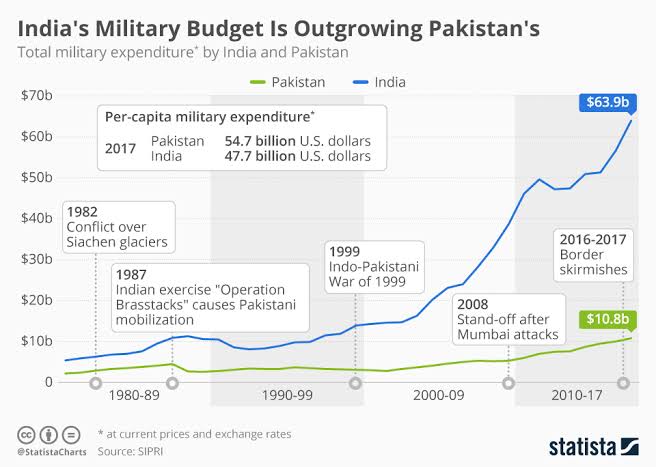


Strength If Armed Forces
- India’s defense plan has changed dramatically over a few years. The unit of armed forces of the Republic of India is the largest in number. Indian defense consists of three uniformed services: the Indian Army, the Indian navy, and the Indian air force. India is ranked four out of one twenty-six most powerful armed forces in the world. Traditionally fixated on its prime rival, Pakistan India is now worried about the striking and rapid modernization of china’s armed forces
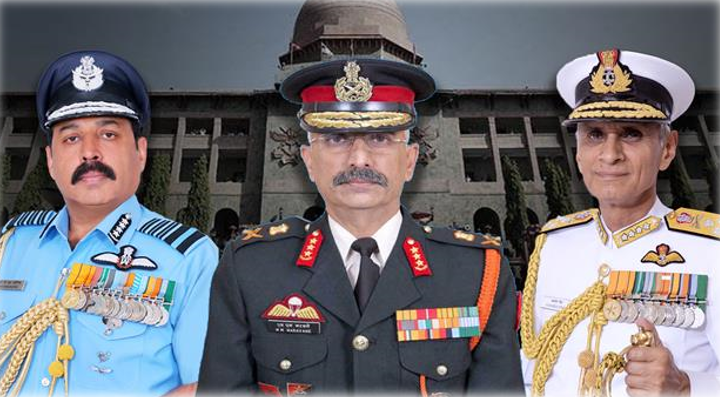
Indian Army :-
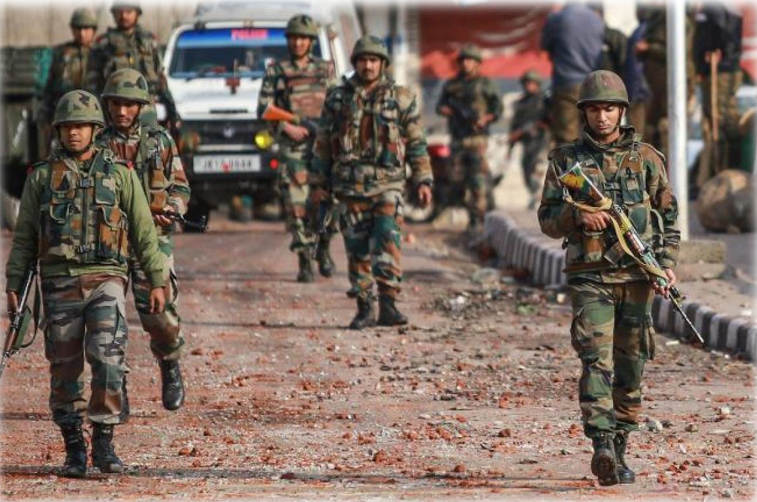
- Indian army is the third-largest force on earth with 1,237,117 active troops and 960,000 store troops. Indian army comprises more than 80% of the country’s active defense staff. Indian army’s most important weapon is tanks with a total strength of 6,464 tanks. Indian armed forces assisted by the CAPF {central armed police forces}, Assam rifles, Indian coast guard and special frontier force. The president of India is the supreme commander of Indian army.
Indian Naval Force :-

- The principal objective of a naval force is to safeguard the nation’s maritime borders. Indian naval forces according to 2019 have 67,252 active armed forces and 75,000 reserved naval personnel with 150 ships and submarines and 300 aircraft. According to November 2021, the operational fleet consists of 01 active aircraft carrier, 1 amphibious transport dock, 8 landing ship tanks, 10 destroyers, 13 frigates, 1 ballistic missile submarines, 16 conventionally powered attack submarines, 24 corvettes, 1 mine countermeasure, 4 fleet tankers and many other auxiliary vessels, small patrol boats and sophisticated ships. Our navy force is able to defeat anyone at any time. Indian Navy is the seventh largest navy in the world. Indian Navy was founded in the year 26 January 1950 before that it operates under Britishers. The president of India is the supreme commander of Indian navy.
Indian Air Force :-

- Indian air force [IAF] has 139,576 active soldiers and 140,000 reserved soldiers. Around 2,086 air crafts are available in the Indian air force consisting of fighter/transfer/trainer air crafts and a huge amount of fighter helicopters. The primary objective of the air force is to secure Indian airspace and to conduct aerial warfare during armed conflict. The president of India is the supreme commander of the Indian air force.
NOTE:- President of India is the supreme commander of the Indian armed forces (Indian Army, Navy, and Airforce).
History Of Indian Defense
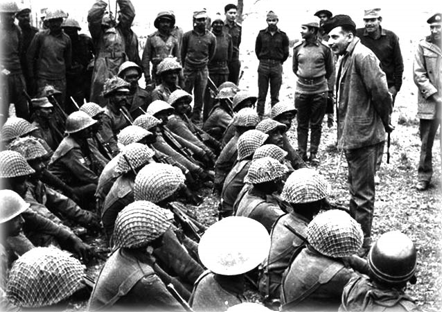
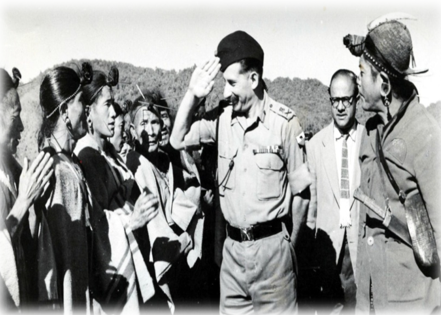
- Wars fought after independence were the most terrifying wars as we don’t have a large amount of troops in our defense but still we managed to protect our country. In our history books we have heard about the stories of soldiers who lost their lives just to protect us from the enemy. We have heard about the battle of Panipat and 100s of year’s long nonviolence struggle for freedom from the British Raj. Geographically India is not confounded with friendly neighbors that results in small conflicts and big wars too. However, Indian army never failed us and these wars helped us to come into the list of most powerful armies in the world.
- The Indian defense was uplifted by Britishers in the 19th century as they need military to fight in world wars from their side. There were several post-independence wars that Indian defense fought and these are listed below:-
1. Kashmir War {1947-1948]
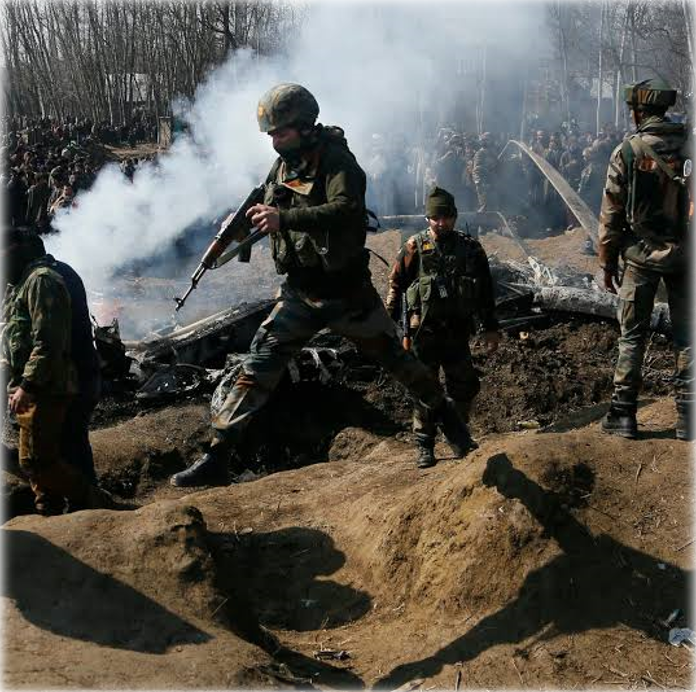
- This was the first war fought in independent India. After snatching independence from Britisher’s government of India gave Sardar Vallabhbhai Patel a duty to take permission to all the kings of princely states whether they want to become a part of India or not and if they are agreed then they have to sign ‘document of accession’. When Sardar Patel came to Kashmir to meet Raja Hari Singh who was the king of Kashmir at that time for the ‘document of accession’ Raja Hari Singh clearly denied that neither he want to become a part of India nor of Pakistan. Pakistan wanted Kashmir as 3/5th population of Kashmir were Muslims dominated and they don’t want to be a part of Indian territory so the government of Pakistan started to take actions to capture Kashmir, the Maharaja of Kashmir was left with no choice but to join India so he signed the document of accession on 2 October 1948. Irked by this decision Pakistan declared war against India, this war was fought for a territorial claim of Kashmir due to the two-nation theory. Conclusion for this war was that ceasefire which is recently renamed as ‘line of control’ established along the border dividing Kashmir between India and Pakistan.
2. India China War 1962
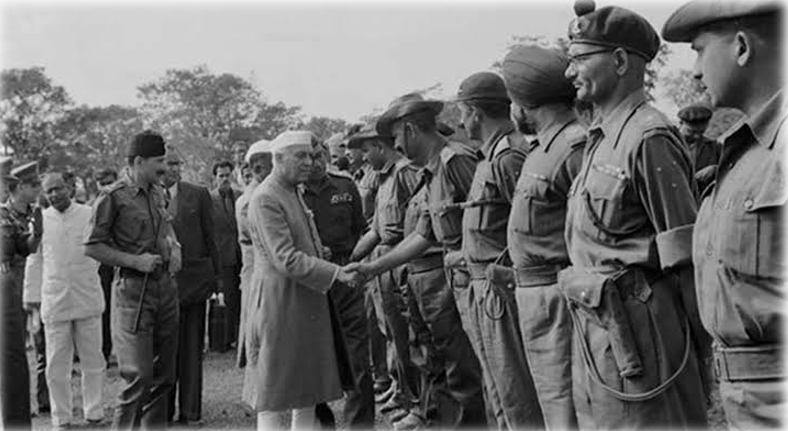
- With the independence of India (in 1947) and China (in1949), one of the policies of the Indian government was to maintain cordial relations with China. India never doubted that china will declare war against India but on 20 October 1962 china attacked India. This war is commonly known as the Sino-India war. The trust of never to be attacked by china did not let the Indian army prepare for the war and the outcome was only 10,000-20,000 Indian troops were present in the war against 80,000 troops of china. The war continued for around 1 month and ended on 21 November 1962, after china acquired the Tibet region of India and declared a ceasefire.
3. India Pakistan War 1965
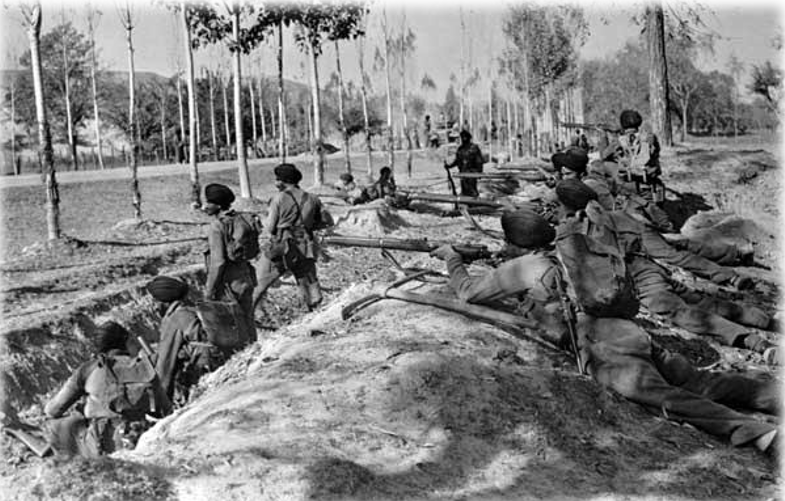
- The consequence of Sino India war motivated Pakistan to capture Kashmir from Indian Territory. At that time Pakistan’s confidence was build up by the modernized army to which USA had contributed. They planned a three-phased program; in the first phase volume of Indian army was tested in Ran of Kutch. In the second phase trouble was caused in Kashmir region to weaken the Indian grip. In the last phase an effort was made to suppress the Indian army in Kashmir by sealing the supply line in Jammu but after that also Indian army managed to win from Pakistani army.
4. India Pakistan War of 1971
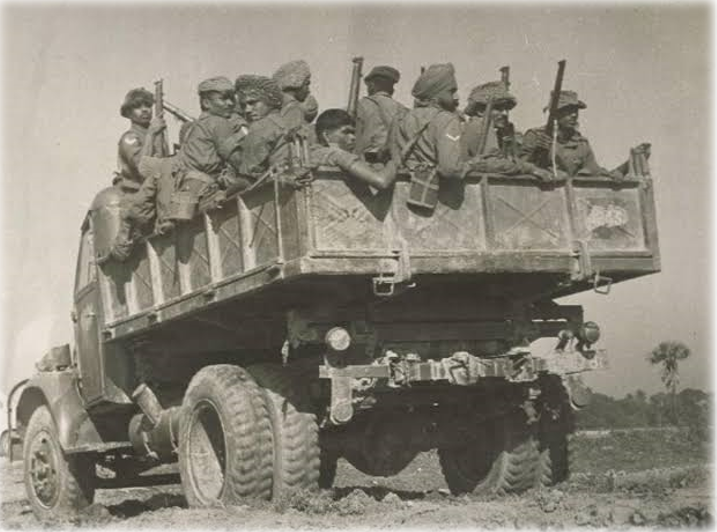
- The war began when Pakistan launched airstrikes on 11 Indian airbases. Our air bases were destroyed dreadfully, runways were also destroyed but our defense did not lose hope but built up a new runway in just one night. It was the first time when all the three forces of India worked together to defeat our enemy. 16 December was a very important day for India Bangladesh and Pakistan. In 1971, India won the war against the Pakistani army, a consequence of this war was the birth of a new country i.e. Bangladesh [earlier East Pakistan]. On this day Pakistan lost its half territory, its forces and had to publicly capitulate to India.
5. Kargil War 1999

- The kargil war was fought between India and Pakistan between May and July 1999 in the kargil district of Kashmir. In this war Indian army recaptured the tiger hill and other posts as a slice of operation Vijay. Both Indian army and Indian air force united our air force clear out regular and irregular troops of Pakistani army. The Indian troops won after three month conflict that led to a loss of lives from both the sides. Nearly 490 armed forces lost their life from both the sides.
Civil Defence Relations
- As the name suggests civil defense relations describes the relationship between civilians and the military. Indian defense never suppressed any civilians or threatened political order.
Organizational Chart Of Ranking And Insignia
- Indian defense is one of the best trained armed forces in the world. Ranks given in the dense are: –
| INDIAN ARMY | INDIAN NAVY | INDIAN AIR FORCE |
| Field marshal | Admiral of the fleet | Marshal of the air force |
| General | admiral | Air chief marshal |
| Lieutenant general | Vice admiral | Air marshal |
| Major general | Rear admiral | Air vice marshal |
| Brigadier | Commodore | Air commodore |
| Colonel | Captain | Group captain |
| Lieutenant colonel | Commander | Wing commander |
| Major | Lieutenant commander | Squadron leader |
| Captain | Lieutenant | Flight lieutenant |
| Lieutenant | Sub lieutenant | Flying officer |
| Subedar major | Midshipman | Flight cadet |
| Subedar | Master chief petty officer I class | master warrant officer |
| Naib subedar | Master chief petty officer II class | Junior warrant officer |
| Hawaldar | Chief petty officer | sergeant |
| Naik | Petty officer | corporal |
| Lance naik | Leading salesman | Leading aircraftsman |
Indian Army Insignia:-
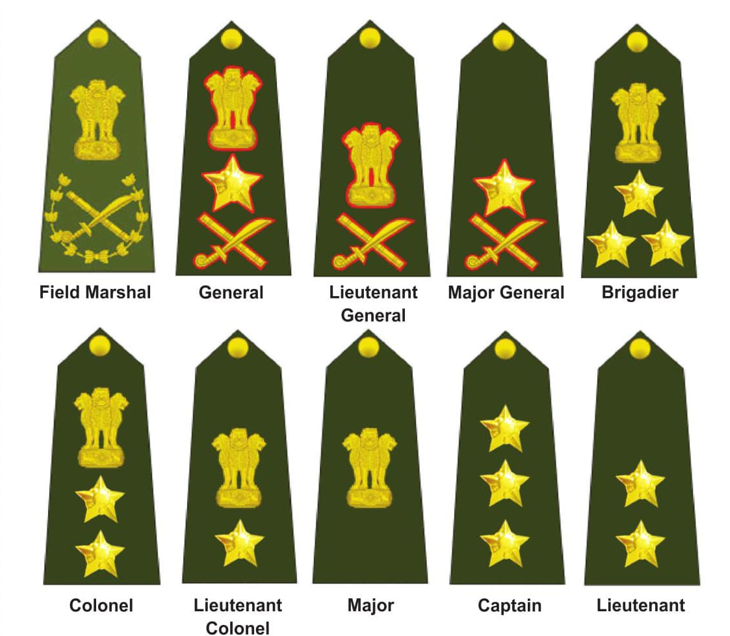


Indian Navy Insignia:-
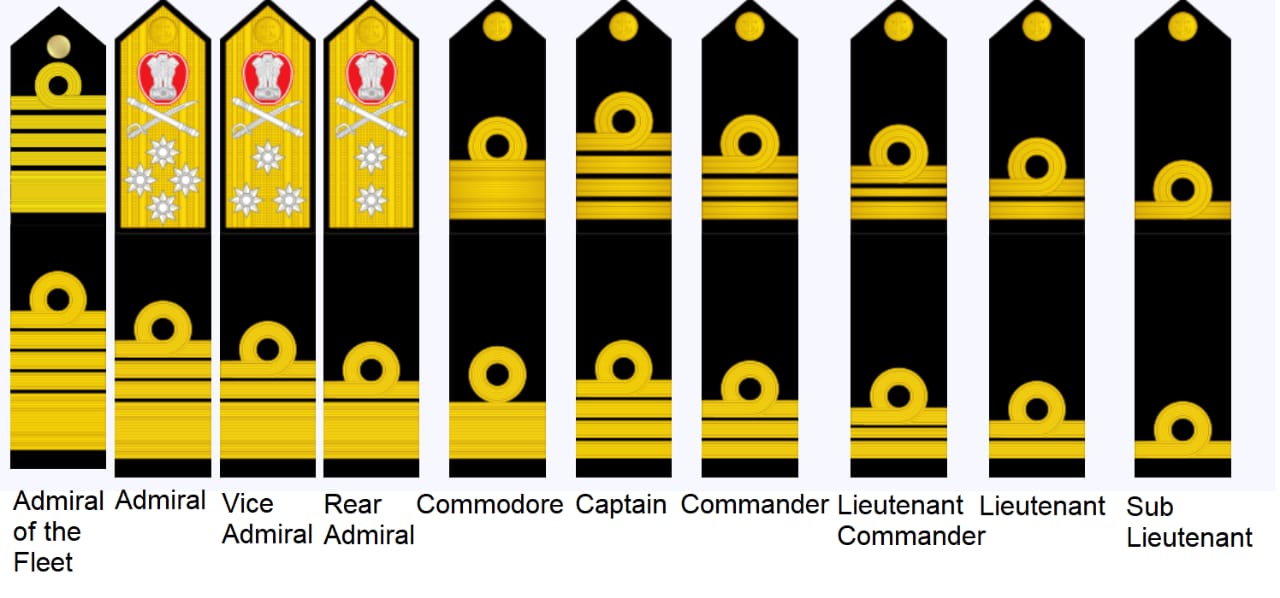

Indian Air Force Insignia:-

Ranking Structure Of Police & CAPF Which Are Equivalent To Indian Armed Forces:-
- Police play a major role in protecting civilians against violent crime and other harmful acts. The military protects the borders of the country but police handle the situations that are going inside the borders. Police follow the rules which the law has assigned them.
=> Ranks and insignia of police are: –
| S.no | RANKS OF POLICE DEPARTMENT |
| 1. | Director general of police (DGP) |
| 2. | Addl. Director general of police (ADGP) / Commissioner of Police (CP) |
| 3. | Inspector general of police (IGP) / Joint Commissioner of Police (JCP) |
| 4. | Deputy inspector general of police (DIG) / Additional commissioner of police (ACP) |
| 5. | Senior Superintendent of police (SSP)/ Deputy commissioner of police (DCP) |
| 6. | Superintendent of police (SP) Deputy commissioner of police (DCP) |
| 7. | Addl. Superintendent of police (Addl. SP)/ addl. Deputy commissioner of police (Addl. DCP) |
| 8. | Deputy superintendent of police (DSP) /asst. commissioner of police (Asst. CP) |
| 9. | Assistant superintendent of ‘police (Asst. SP) |
| 10. | Inspector of police |
| 11. | Sub inspector of police |
| 12. | Asst. sub inspector/havildar major |
| 13. | Havildar |
| 14. | Lance naik |
| 15. | Constable |

Ranks And Insignia Of CAPF Are:-
| S.N | Ranks of CAPF:- |
| 1 | Director-General |
| 2 | Special Director General |
| 3 | Additional Director General (ADG) |
| 4 | Inspector General (IG) |
| 5 | Deputy Inspector-General (DIG) |
| 6 | Commandant |
| 7 | Second-In-Command (2 IC) |
| 8 | Deputy Commandant (DC) |
| 9 | Assistant Commandant (AC) |
| 10 | Inspector |
| 11 | Sub inspector (SI) |
| 12 | Assistant Sub inspector (ASI) |
| 13 | Head Constable (HC) |
| 14 | Senior Constable |
| 15 | Constable |
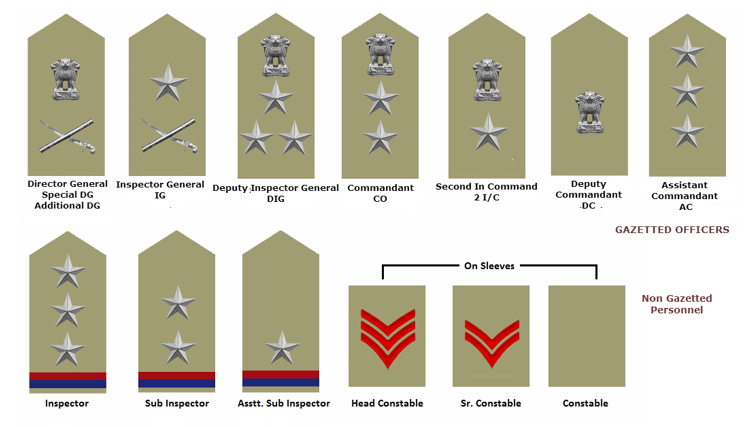
Reforms To Be Done In Defence Sector
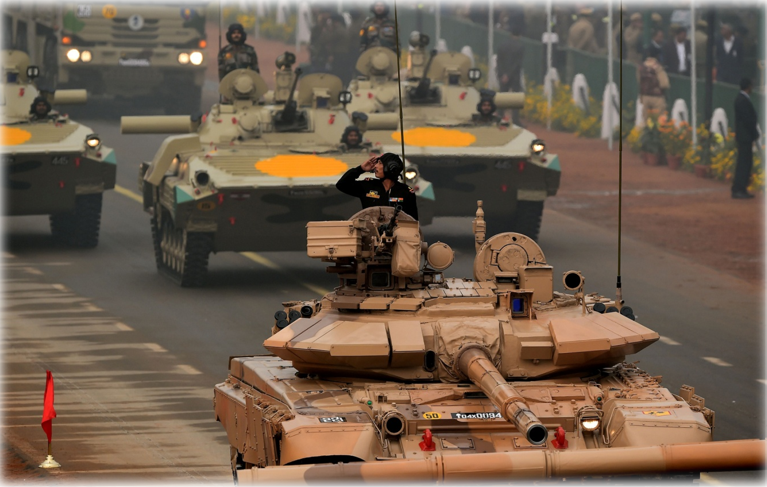
- Indian defence was facing severe problems such as the absence of a clearly pronounce NSS, poor civil-military relations, failure in modernisation on a long term basis. After some years reforms should be taken because when the time changes needs changes and when needs are changed policies should be changed, thus this is the time when our defence want reforms to become more efficient effective and strongest. In the past few years, there has been a swap and a slew of defence reforms have been brought. These types of reforms were never applicable in defence that is the reason why these reforms are effective and efficient.
Self-Reliance In Defence

Recently our honourable prime minister launched a project known as made in India which means to become self-independent, for this a slogan was given that is “ATMA NIRBHAR BHARAT”. Almost every company of India is following this scheme and it’s time for our defence to bring this scheme to their sector. From September 2020 101 defence objects faced a conflict in import procedure. By prohibiting items of defence there was a 10% increase in 2020-2021.
Digital Transformation
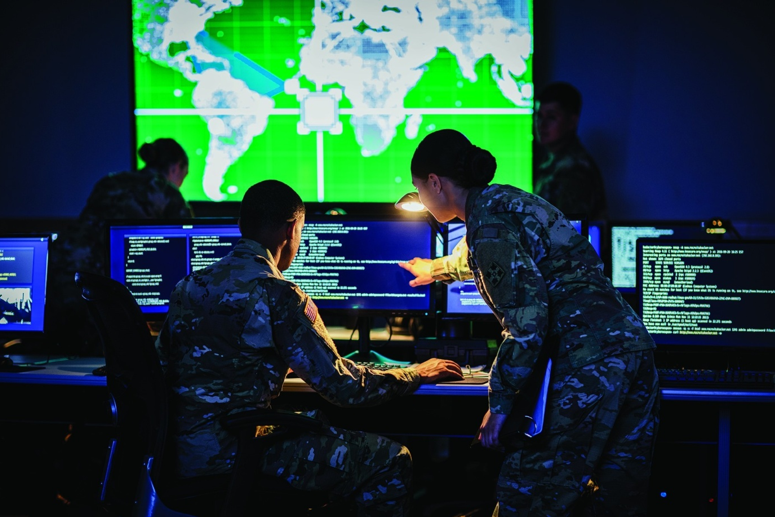
- In the modern world, everything is digital, banks, schools, colleges, jobs everything is going on electronic devices i.e. digitally so it’s very important for our defence sector to work digitally to reduce the time limit, workforce and the work will be more effective. DGQA [directorate general quality assurance] started online confinement inspection in May 2020 to label security warning.
Participation Of Women In Armed Forces

- Earlier women were not allowed in defense which did not give them an equal opportunity as a man but as in our preamble equality word is given so government thought to bring some reforms for the participation of women in defense so that they too can serve their nation. Ten streams of Indian army unfasten giving permanent commission to short service commission women officers
Help Beyond Borders
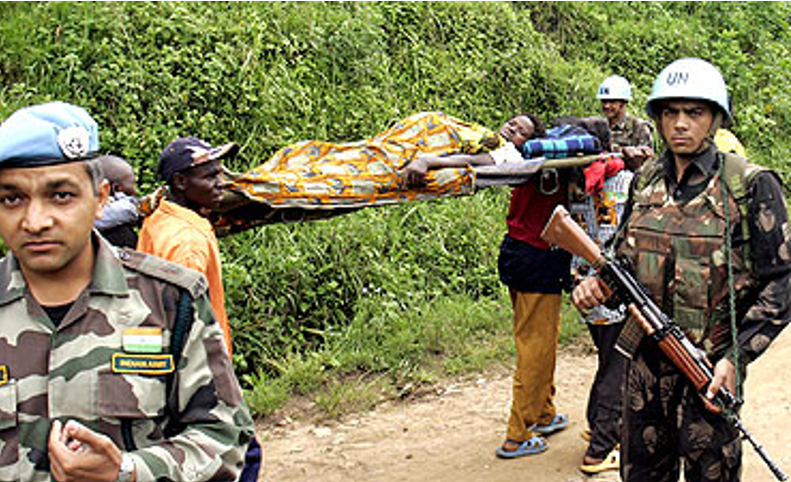
- Indian government always helped other countries, who are in need of our help; in the Vande Bharat’s mission, Indian defense shifted stranded Indians from Iran, Sri Lanka, and the Maldives. Indian navy supplied COVID-19 medical relief to five different countries. INS Airavat supplied 270 MT food assistance to Sudan, Djibouti, and Eritrea as they were struck by natural calamities. When Sri Lanka was facing severe problems from its biggest oil spill The Indian Coast Guard rescued them.
Top 13 Interesting Facts About Indian Defence Sector
1. We enjoy our lives with family and friends, celebrate our festivals together with happiness, and live peacefully this is all because of our strong defense that comprises of Indian army, Indian navy, and Indian air force. They are the protectors of our nation without them we can’t live peacefully, without them anyone can capture us as Britishers did so we should be thankful to them.
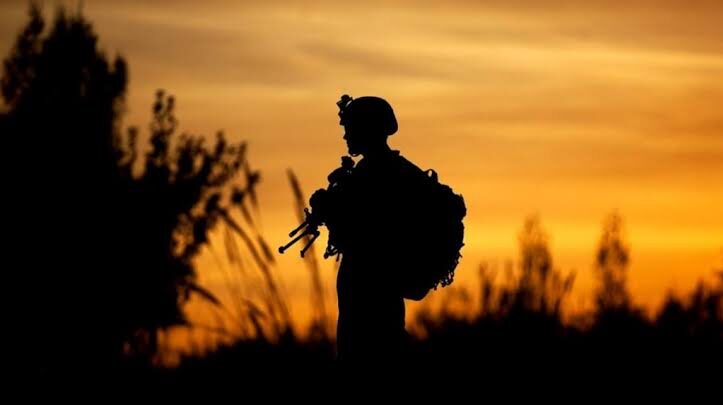
2. The Indian army was formed during the British raj to serve them. On October 1 1895 Indian army was established, at that time Indian army was called the British Indian army.
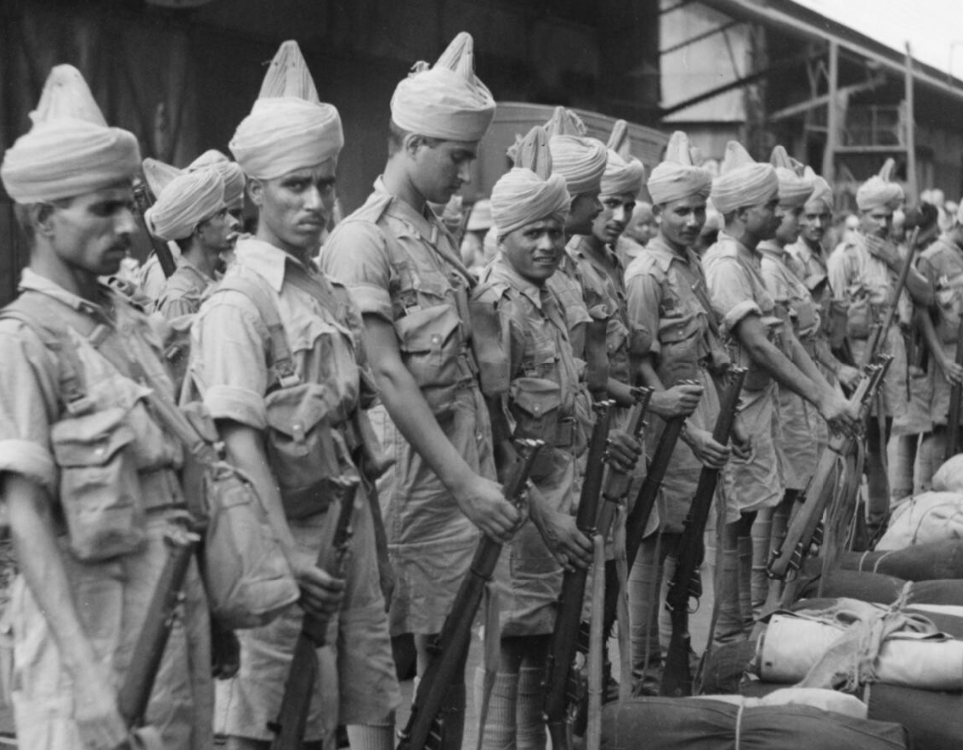
3. We all have heard about the Gorkhas regiment the most fearless and respected regiment that joined Indian armed forces on 24 April 1815. The government of India gave Gurkhas many awards like param veer chakras that to 3 times, 84 veer and 33 Mahavir chakras.
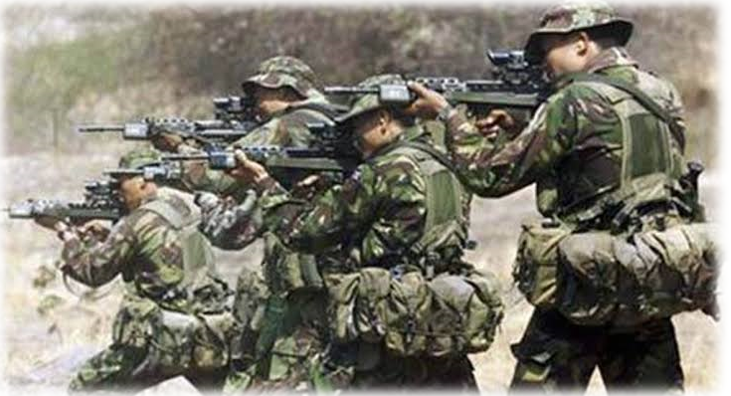
4. Siachen glacier is the highest battlefield which is 5000 meters above sea level, the temperature in this glacier in winters drops to -50⁰C. The Indian army controls this battlefield.
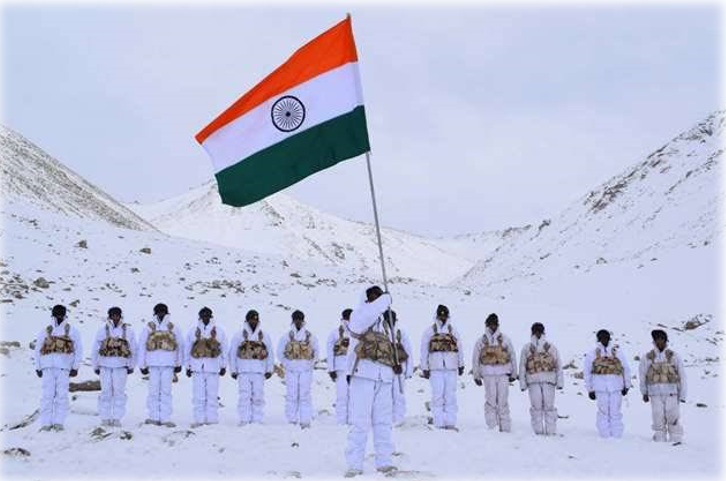
5. Every country has defence sector but in many countries, it is compulsory to go in defence for some time period but in India, it is not compulsory for everybody to join the military, in fact, India has the highest number of ‘voluntary’ military forces across the world.
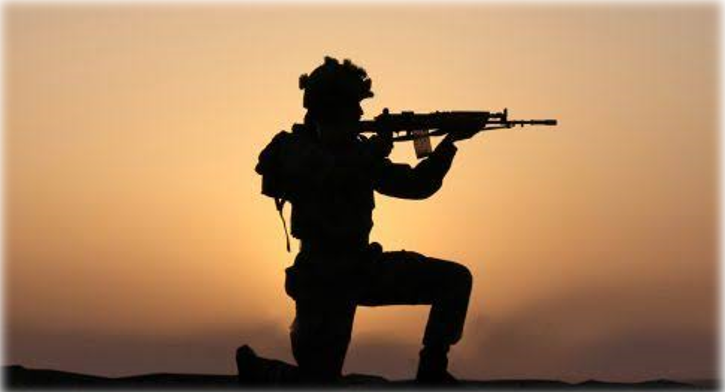
6. Horses are known for their royalty but in many countries horsed cavalry does not exist but this is not the case in India, we have horsed cavalry regiment which is the last 3rd remaining in the world.

7. Every country wants to spread their territory so they attack other countries but India never initiated the first attack, we do not govern any other nation and we are not involved in any military coup to gain power and money.

8. USA, Russia, and China are on top ranks for global firepower, and talking about India we are on rank 4th in global firepower.

9. We all have heard about operation Rahat, the Indian army shifted many people as there is a massive flood in Uttarakhand. It was one of the sizeable rescue missions ever carried in the world.

10. The Indian Army’s HAWS {high altitude warfare school} is considered as one of the most elite training centers across the world.

11. Other countries give reservations to any particular caste for getting into defence but in India, there is nothing called reservations in defence sector exists.
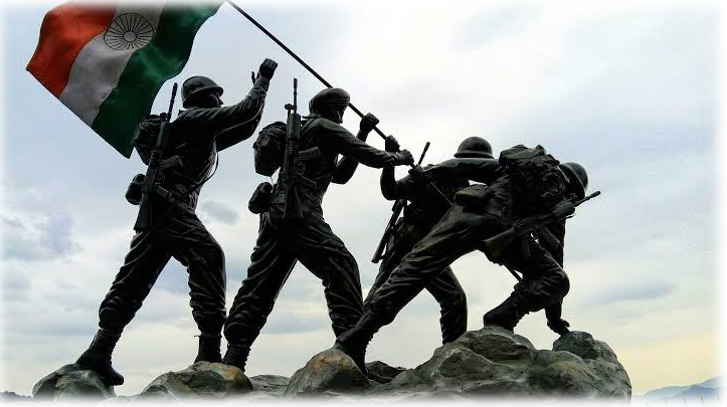
12. The battle of longwall was challenged in December 1971 between India and Pakistan. In that war, there were just 120 Indian troops against 2000 Pakistani troops. Famous Bollywood movie ‘border’ was pictured, in that battle there were only two victims on the Indian side.

13. Indian army is not just known for their powerfulness but their courage and efficiency, Indian army built the highest bridge in the world i.e., the Bailey bridge.

Some FAQs Or Also Ask Question
What is military reform?
Military Reform means to bring improvement in the present condition of the military. Military reforms are important as they guarantee the civil rights of soldiers, decrease the length of military service, reform military judicial systems and create a more effective national military organization.
What is India's Defence budget 2021?
In the current financial year 2021-22, the Narendra Modi government has allocated a budget of Rs 4,78,196 crore of defense expenditure which is 13.73 percent of the total central government expenditure, the ministry of defense informed a parliamentary standing committee.
Does India have any secret weapons?
Indian has many secret weapons such as KALI weapons, etc.
Which committee is related to Defence reforms in India?
Naresh Chandra Committee is related to Defense reforms in India.
How many types of defense are there in India?
India has three professional uniformed services: the Indian Army, Indian Navy, and Indian Air Force. Besides this, India has CAPF and other state police forces for maintaining internal security.


